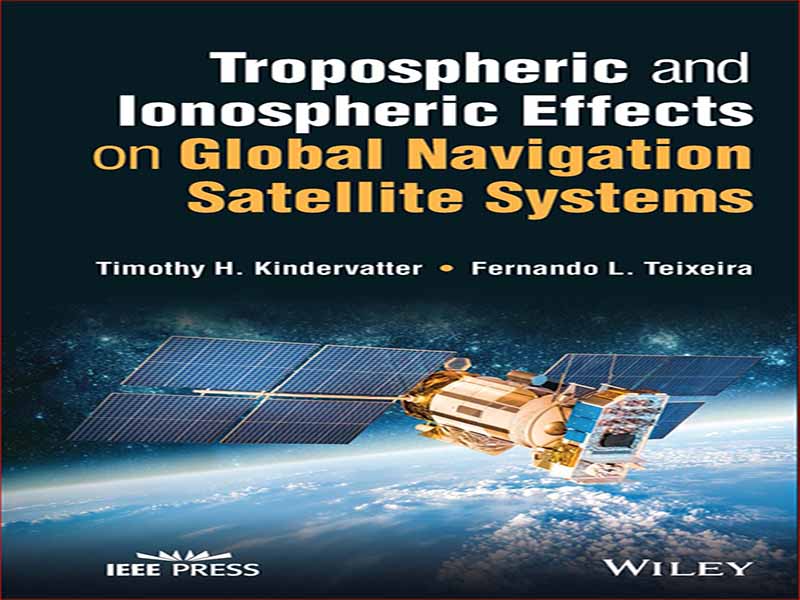- عنوان مجله: Tropospheric and Ionospheric Effects on Global Navigation Satellite Systems
- نویسنده: Tim-H.-Kindervatter,-Fernando-L.-Teixeira
- حوزه: ماهواره
- سال انتشار: 2022
- تعداد صفحه: 531
- زبان اصلی: انگلیسی
- نوع فایل: pdf
- حجم فایل: 9.77 مگابایت
سامانههای ماهوارهای ناوبری جهانی (GNSS) طیف وسیعی از کاربردها را شامل میشود که نه تنها ناوبری، بلکه نقشهبرداری و نقشهبرداری، تعیین مدار ماهوارهای، و یک مرجع زمانی جهانی دقیقاً هماهنگ شده را شامل میشود. این کتاب بر روی اثرات جوی متمرکز شده است که بر انتشار سیگنال های ارسال شده از ماهواره های GNSS در مدار به گیرنده های روی زمین تأثیر می گذارد. این کتاب همچنین مدلهای مختلف پیشبینی را پوشش میدهد که به دنبال کمی کردن چنین تأثیراتی هستند. به منظور درک کامل محدودیتهای اعمال شده توسط اثرات انتشار جوی بر عملکرد GNSS و ملاحظات طراحی که هدفشان رسیدگی به این اثرات است، دو فصل اول این کتاب یک نمای کلی از GNSS ارائه میکند. فصل 1 سیستم موقعیت یابی جهانی (GPS) را در نقش یک GNSS نمونه معرفی می کند. طراحی سطح سیستم و تدارکات GPS به عنوان یک مثال عینی از نحوه عملکرد یک GNSS معمولی ارائه شده است. به طور خاص، این فصل نقش سه بخش اصلی سیستم GPS و بحث در مورد سیستم ارتباطی GPS، از جمله فرکانس های حامل و طرح مدولاسیون، کدهای محدوده، و به اصطلاح پیام ناوبری (یعنی داده های مدوله شده بر روی) را مورد بحث قرار می دهد. سیگنال GPS). فصل 2 تمرکز را گسترش می دهد تا همه سیگنال های GNSS مدرن را در بر گیرد و اصول موقعیت یابی GNSS را مورد بحث قرار می دهد. راه های مختلفی برای تعیین موقعیت و سرعت گیرنده GNSS بر اساس سیگنال هایی که از صورت فلکی GNSS دریافت می کند وجود دارد. سه کمیت اصلی، که به عنوان مشاهدهپذیر GNSS شناخته میشوند – شبه، فاز حامل، و تغییر داپلر – در موقعیتیابی استفاده میشوند و این فصل به هر یک از آنها میپردازد. هر قابل مشاهده GNSS به روشی ساده مدلسازی میشود، که تحلیل ریاضی را ساده، اما نادرست میکند – حداقل بدون تصحیح خطا. منابع مختلف خطا، از اثرات جوی گرفته تا اثرات نسبیتی، برخی از خطاها را در موقعیت یابی GNSS نقش دارند. مهمترین این اثرات و همچنین تکنیک های رایج کاهش در این فصل مورد بحث قرار گرفته است. در نهایت، اشتقاقی از موقعیت یابی GNSS با استفاده از رنگ شبه ارائه شده است که بر اساس مفاهیم قبلی در فصل است.
Global Navigation Satellite Systems (GNSS) have a range of applications that include not only navigation, but also mapping and surveying, satellite orbit determination, and a precisely synchronized global time reference. This book is focused on the atmospheric effects which impact the propagation of the signals transmitted from GNSS satellites in orbit to receivers on the ground. The book also covers various predictive models which seek to quantify such effects. In order to fully appreciate the limitations imposed by atmospheric propagation effects on GNSS performance and the design considerations that aim to address these effects, the first two chapters of this book provide an overview of GNSS. Chapter 1 introduces the Global Positioning System (GPS) in the role of an exemplary GNSS. System-level design and logistics of GPS are presented as a concrete example of how a typical GNSS operates. In particular, this chapter discusses the roles of the three major segments of the GPS system and a discussion of the GPS communication system, including the carrier frequencies and modulation scheme, ranging codes, and the so-called navigation message (i.e. the data modulated onto the GPS signal). Chapter 2 broadens the focus to include allmodern GNSS signals, and discusses the fundamentals of GNSS positioning. There are several ways to determine the position and velocity of a GNSS receiver based on the signals it receives from a GNSS constellation. Three main quantities, known as GNSS observables – pseudorange, carrier phase, and Doppler shift – are used in positioning and this chapter touches upon each of them. Each GNSS observable is modeled in a straightforward fashion, which makes mathematical analysis simple, but inaccurate – at least without error correction. Various sources of error, from atmospheric to relativistic effects, contribute some error to GNSS positioning. The most important of these effects, as well as common mitigation techniques, are discussed in this chapter. Finally, a derivation of GNSS positioning using pseudorange is presented, building upon the earlier concepts in the chapter.
این کتاب را میتوانید از لینک زیر بصورت رایگان دانلود کنید:
Download: Tropospheric and Ionospheric Effects on Global Navigation Satellite Systems


































نظرات کاربران